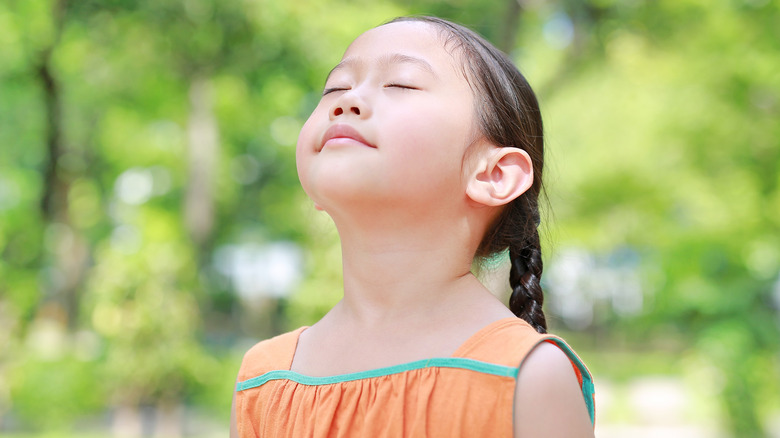Greener Neighborhoods May Improve The Function Of Children's Lungs
Not only is it a beautiful sight to see, but science tells us that the beauty of nature can impact our health in a multitude of ways. Experts from the University of Minnesota say that being out and about amongst the greenery can potentially lower blood pressure, heart rate, muscle tension, stress, and mortality rates, as well as boost our overall emotional wellbeing.
Now, a new study published in the European Respiratory Journal has found that nature may also offer benefits by way of children's lung health. Researchers analyzed the respiratory function of more than 3,200 children in Portugal by measuring how much air they were able to exhale after inhaling deeply (via HealthDay). This data was paired with information collected via satellite to determine the distance between the children's homes and the nearest urban green spaces such as public parks. Measurements were taken at birth, in addition to when the children turned 4, 7, and 10 years old.
The connection between nature and kid's respiratory health
"Our research suggests the greener, the better," co-author of the study Diogo Queiroz Almeida stated, as reported via Healthday. Findings revealed that children who progressively moved closer to green environments during the first ten years of their life exhibited better overall respiratory health. Even when accounting for exercise and air pollution, this outcome remained consistent. Offering plausible causes for their findings in a public news release, researchers suggested that the stress relief associated with the natural world, as well as its potential to improve children's microbiome health, could be possible explanations for the link. When assessing for possible connections between children's lung health and proximity to bodies of water, no correlation was found, although further research is needed.
Queiroz Almeida went on to address the inherent inequalities that exist when suggesting the benefits of families moving to greener environments (via HealthDay). "To reduce health inequalities, we need to make our cities greener, especially in areas where there is little or no green space," he stated.


